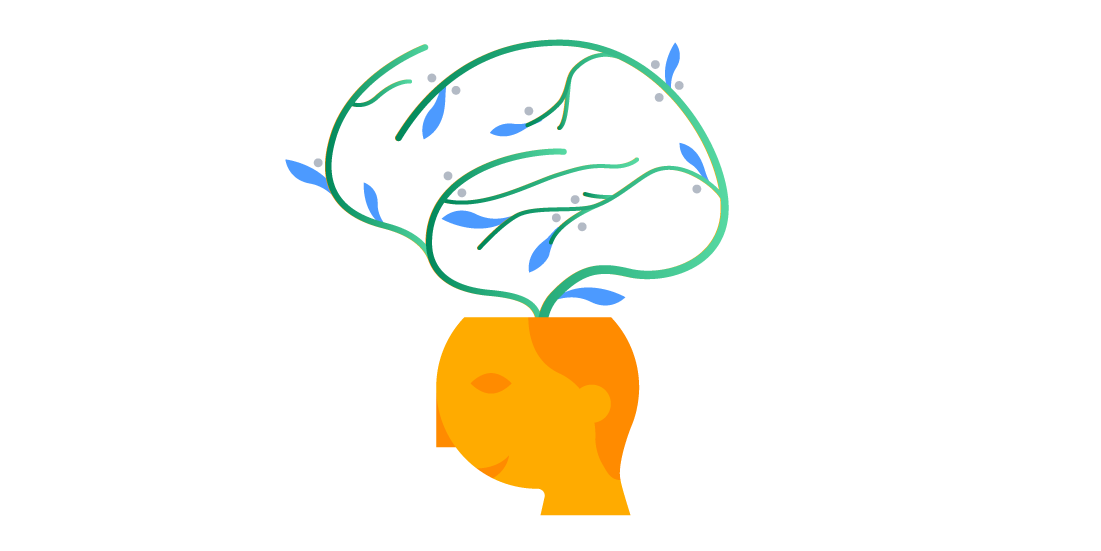Listen to this blog
[soundcloud url=”https://api.soundcloud.com/tracks/311726142″ params=”color=0066cc&auto_play=false&hide_related=false&show_comments=true&show_user=true&show_reposts=false” width=”100%” height=”166″ iframe=”true” /]
The concept of a growth mindset is a popular topic lately, and I sometimes say to myself “Self, you need to embrace the growth mindset. The growth mindset is cool.”
Why? The aptly named growth mindset helps us grow in whatever we pursue – especially in our work. When we’re growing, we’re more productive. And when I’m productive, I feel better. And you can, too.
What is a growth mindset?
A growth mindset believes that one’s fundamental abilities can be developed through perseverance and effort; intelligence and talent are simply good starting points. A growth mindset is synonymous with a love of learning.
By contrast, in a fixed mindset, intelligence and talent are seen as fixed traits, suggesting that success comes from these inherent qualities alone, without the need for further development or effort.
Here’s a simple illustration highlighting the differences between a fixed and a growth mindset:

This concept struck a chord with me because I discovered that when I try things, I often get only so far before encountering a challenge and stopping. Behaving this way is all well and good when it comes to rock climbing, or judo, or kite surfing (a few of many activities I’ve failed to master), but when it comes to my work, it’s a problem.
I think it’s my inability to use – and stay in – a growth mindset that keeps me from heading home smiling more often. So, I decided to write this to call myself out for moments of fixed-mindedness (and maybe you’ll recognize a bit of yourself in those moments, too), and share my techniques for working through them. If we can get better at catching ourselves in those moments when our brains revert to a fixed mindset, we can pull ourselves back into growth-iness and ultimately be more successful.
Perseverance, gumption traps, and maintaining a growth mindset
1. Challenges
Here’s an example of when I wasn’t in the right mindset: learning Java. I studied a bit of Java at university, and have worked with it in almost every role I’ve had (including my current gig as a developer on Jira Software), and yet I still find it hard to get my head around.
When I’m faced with a challenging coding problem, I have a tendency to work over one particular aspect of it again and again until I conclude that it’s impossible or that I’m incapable of solving it. I throw my hands up in surrender and stop. In other words, I’m in a fixed mindset and avoiding the problem by giving up.
So, lately, I try to recognize that avoidance, take a step back, and think about the growth mindset. When I’m ready, I walk through the problem once again, bit by bit, looking for new ways to think about it until I start to see another way forward. And for me, it always helps to talk through these steps – out loud, not just in my head. I jot down clues as they come about. Soon enough (and rather miraculously), I begin to find root causes of the problem.
2. Obstacles
My first impulse when I hit a roadblock is to immediately divert my attention to something else. I lose focus, just like it says in the chart above. Whether it’s clicking a tempting bookmark in my browser, nipping out to grab a coffee, or just about anything to delay keeping at it and fighting through the discomfort. A coworker calls this “instant gratification monkey syndrome.” It’s the idea that we’ll do just about anything other than the actual task at hand if it has suddenly become challenging, and especially when there are so many tempting diversions – articles, videos, email, social – mere clicks away.
In Zen and the Art of Motorcycle Maintenance, Robert Persig talks about the “gumption trap” – the phenomenon of knowing what needs to be done, but lacking the motivation to do it. His solution is to stand up, put down whatever project is sucking the gumption out of you, walk away, and return when you’re feeling more inspired. Now, granted, this isn’t often a viable option for projects at work, but just recognizing what’s happening (I’m avoiding and losing focus) helps me make peace with it, and usually un-traps just enough of my gumption to do one more thing on the project. Then another one more thing. Then another. And so on. Eventually, enough momentum builds up and I’m back in the groove.
3. Effort
I have similar troubles with cycling. When my alarm goes off at 5 A.M., the thought of going out on the bike is dreadful. The temptation to stay in bed is strong, strong, strong – curse you, instant gratification monkey – but I also know the feeling won’t last and I’ll feel guilty later, as always. The trite-but-true phrase “no pain, no gain” is pure growth mindset!
And on the mornings when I get up and ride? I feel better. It’s hard work, sure, and the good feeling isn’t instantaneous (though sometimes it is). But when the ride is over and my body feels better, my spirit is stronger. I’m proud of myself, and that goes a long, long way.
So when I find myself reaching for the snooze button, I consider all this. I make a conscious effort to stop and think about the growth mindset. I ask myself, is going back to sleep really what I want to do? Am I giving up too easily? Would I rather shower off pangs of regret, or the sweat of accomplishment? C’mon, the answers are obvious.
4. Criticism
I also find it useful to review each of my days and assess how I’ve done. As I mentioned at the beginning, I often judge my days based on my mood at the end. My worst days are when I haven’t managed to get things together, I’ve procrastinated and wasted time, and I find myself with very little to look back on positively.
So I’ve learned to ask myself two questions:
- What was the best part of the day?
- What went wrong, and how can I make sure it doesn’t happen again?
These questions help me focus on all aspects of my day, the good and the bad, and they help me internalize strategies for creating more good days going forward.
And it turns out, variations of these questions help me process criticism from coworkers. Assuming their critique is valid (and it usually is), I can hold a mini-retrospective with myself:
- Which aspects of my work am I most proud of?
- What can I do to improve the aspects I’m less proud of?
That’s the dark side of growth, I guess…
5. Success of others
My team inclydes some of the smartest people I’ve ever worked with. But I didn’t always think this way.
For a long time, I was fiercely jealous of people I thought were more successful or more intelligent. But, with the help of our culture of openness and honesty, I was able to understand how the work I do relates to the work of my peers, and how it all comes together to create something awesome.
So, where I once perceived those I deemed smarter as adversaries, I now see them as dedicated colleagues with a passion for learning. Where I once saw (and was jealous of) more successful managers, I now see peers with skills that complement mine, and together we’re doing some of the best work of our lives. You see, this is the growth mindset at its finest. Where a fixed mindset leads you to see the success of others as a threat, the growth mindset encourages you to see the success of coworkers as an inspiration. See, I told you it was cool.
Some open and frank conversations with my fellow Atlassians during peer reviews, one-on-ones, and even in casual hallway interactions helped me in this shift of mindset. Because that’s another amazing thing about the way our company works: we have access to literally everyone in the company.
It might not be possible to retrofit a company to have a similar level of openness and commitment to authenticity, but it’s not too hard to adopt the growth mindset concepts to influence peer interactions. We can choose to be more transparent or more helpful than might be required or than we’re used to. In other words, we can choose to go the extra mile, we can choose to be quick to praise and slow to criticize. We can choose to seek first to understand.
Growing at work, and outside work too
I’ve been guilty of having a fixed mindset far too often, and I’m working to change that. Things like wisdom and achievement are the products of putting in hard work, not avoiding it. We live in a society where the instant gratification monkey sits on everyone’s shoulder. But the pleasures that result from determination and hard work far outweigh anything that devilish chimp has to offer. The right mindset, like the growth mindset, helps put things in perspective.
Maybe all this seems obvious to you, in which case, you’re lucky. For me, I’ve found that taking the time to assess what I’m doing is tremendously effective in keeping me on track at work. When I feel myself losing focus, I try to remember that short-term frustration will likely result in long-term improvement of my abilities – if I just stay with it. A growth mindset opens me up to more creativity and possibility, and I discover I’m able to achieve more and set higher goals.











































